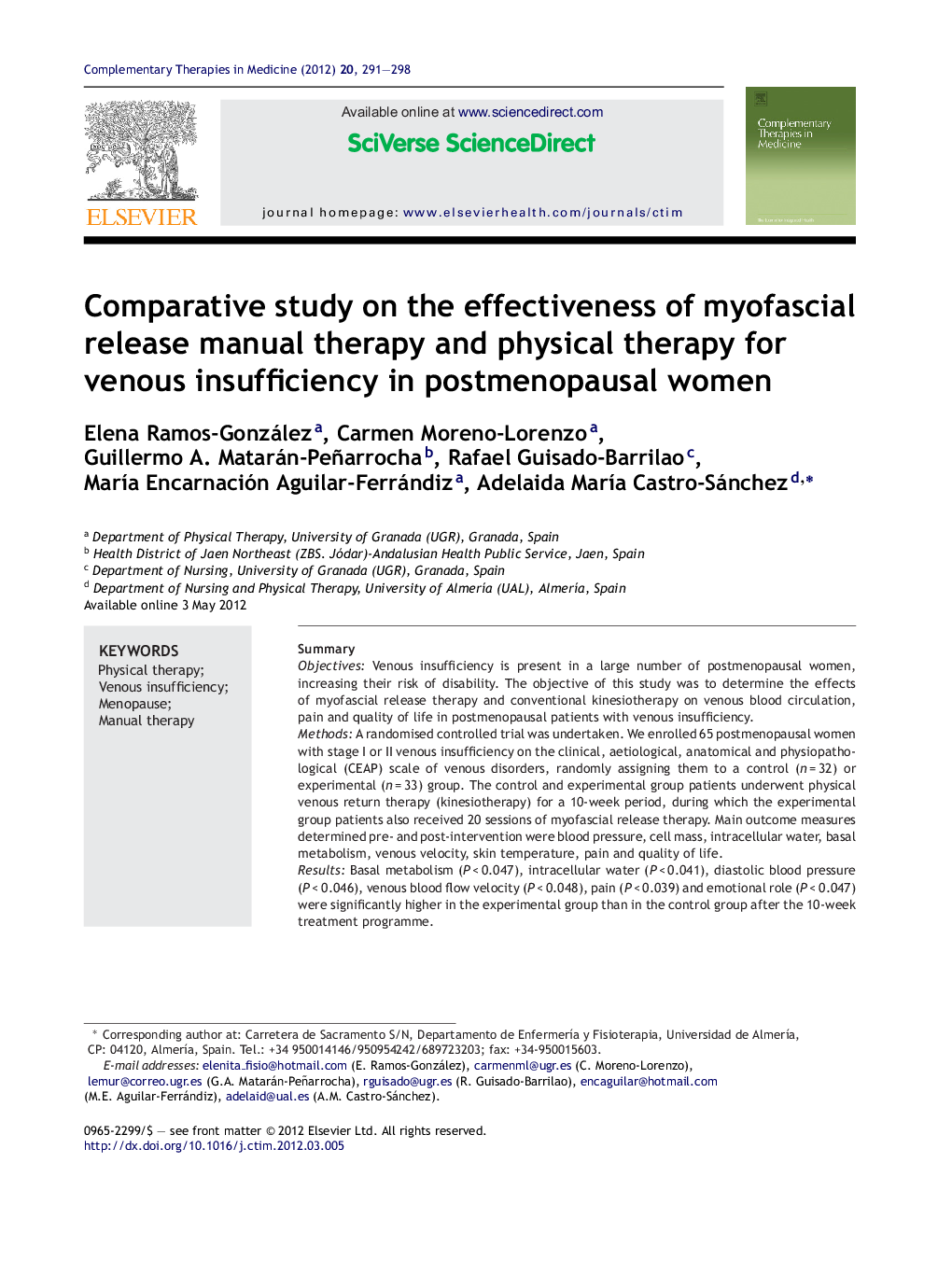| Article ID | Journal | Published Year | Pages | File Type |
|---|---|---|---|---|
| 2629104 | Complementary Therapies in Medicine | 2012 | 8 Pages |
SummaryObjectivesVenous insufficiency is present in a large number of postmenopausal women, increasing their risk of disability. The objective of this study was to determine the effects of myofascial release therapy and conventional kinesiotherapy on venous blood circulation, pain and quality of life in postmenopausal patients with venous insufficiency.MethodsA randomised controlled trial was undertaken. We enrolled 65 postmenopausal women with stage I or II venous insufficiency on the clinical, aetiological, anatomical and physiopathological (CEAP) scale of venous disorders, randomly assigning them to a control (n = 32) or experimental (n = 33) group. The control and experimental group patients underwent physical venous return therapy (kinesiotherapy) for a 10-week period, during which the experimental group patients also received 20 sessions of myofascial release therapy. Main outcome measures determined pre- and post-intervention were blood pressure, cell mass, intracellular water, basal metabolism, venous velocity, skin temperature, pain and quality of life.ResultsBasal metabolism (P < 0.047), intracellular water (P < 0.041), diastolic blood pressure (P < 0.046), venous blood flow velocity (P < 0.048), pain (P < 0.039) and emotional role (P < 0.047) were significantly higher in the experimental group than in the control group after the 10-week treatment programme.ConclusionThe combination of myofascial release therapy and kinesiotherapy improves the venous return blood flow, pain and quality of life in postmenopausal women with venous insufficiency.
